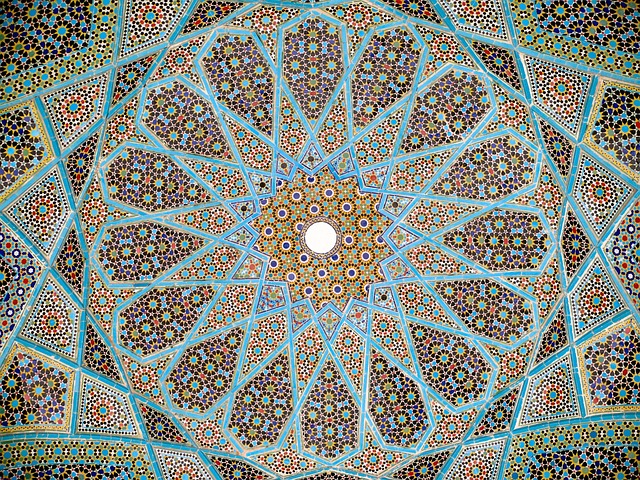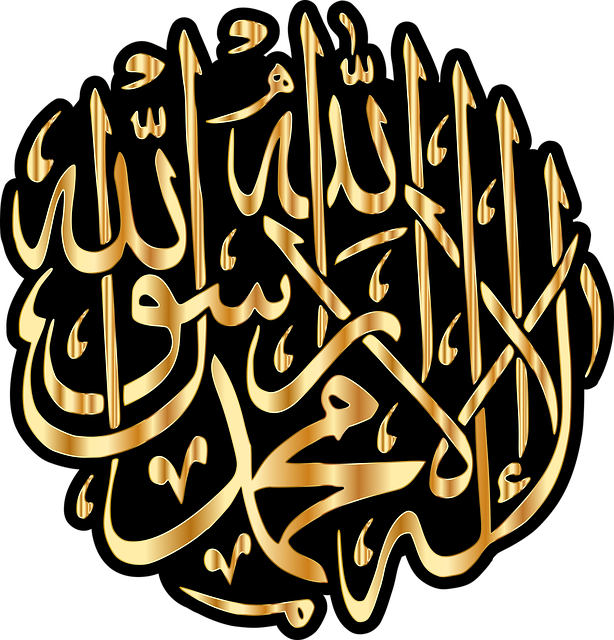Welcome to The Global Tapestry of East Asia Day – Islamic Golden Age

>Learning Areas
| Unit 2: The Global Tapestry (Population Patterns and Processes) |
| How states formed, expanded, and declined in areas of the world during the period c. 1200–c. 1450 |
| Patterns associated with human populations. |
| Population density and how it affects society and the environment |
| Theories of population growth and decline |
| Population and immigration policies and their effects |
>Introduction
Before we start, Islamophobia is a real thing. I’m not talking about the obvious kind here, the name calling.
It’s not good to try to rewrite the history of any 500 year old empire, especially one so rich with invention, science, maths, and art; a source of pride for billions of Muslims, and attempting to do so is indeed islamophobia.
To get to the heart of why thing happens, we would have to reach deeply on to the annals of history and colonialism, which does pop up from time to time in the shadows. The achievements of many around the world including: Africans, Indians, and Asians, have not been held to the level of esteem they deserve. Not even all Muslims around the world are aware of the breadth of their rich history.
Islamic scholars however, also recorded everything. Tragically a whole bunch of it was lost when the west destroyed Baghdad in April of 2003, but as you will learn today, scholars from around the world also recorded much of it. We have a lot of evidence… and there are a lot of notable women!
A Few Things to Think About Today.
Where would you look today for evidence of the inventions and discoveries of The Golden Age of Islam?
When do you think anti-Muslim hate started and why?
You should at least find some of the answers to these questions.
The Islamic Golden Age was a period of scientific, economic and cultural flourishing in the history of Islam, traditionally dated from the 8th century to the 13th century.
This period is traditionally understood to have begun during the reign of the Abbasid caliph Harun al-Rashid (786 to 809) with the inauguration of the House of Wisdom.
Scholars from all over the Muslim world flocked to Baghdad, the world’s largest city by then, to translate the known world’s classical knowledge into Arabic and Persian.
The period is traditionally said to have ended with the collapse of the Abbasid caliphate due to Mongol invasions and the Siege of Baghdad in 1258.

>More for future reference
There is a whole set of podcasts to listen to here which cover the whole of the Great Islamic Empire.
Part One: What is Islam?
>What is Islam?
Islam is a major world religion made popular by the Prophet Muhammad in Arabia in the 7th century CE. The Arabic term islām, literally “surrender”. A Muslim accepts surrender to the will of Allah (God). Allah is viewed as the sole God—creator, sustainer, and restorer of the world. The will of Allah, to which human beings must submit, is made known through the sacred scriptures, the Qurʾān (Koran). In Islam Muhammad is considered the last of a series of prophets who included: Adam, Noah, Abraham, Moses, Solomon, and Jesus.
It is a Abrahamic religion along with Christianity and Judaism.
(adapted from: https://www.britannica.com/topic/Islam)
Part Two: The Beginning of The Golden Age of Islam
>Timeline of Inventions, Constructions, Events, and Notable Peoples
>The Beginning
The Islamic Golden Age is traditionally dated from the mid-7th century to the mid-13th century during which Muslim rulers established one of the largest empires in history.
During this period, artists, engineers, scholars, poets, philosophers, geographers, and traders in the Islamic world contributed to agriculture, the arts, economics, industry, law, literature, navigation, philosophy, sciences, sociology, and technology, both by preserving earlier traditions and by adding inventions and innovations of their own.
Also at that time, the Muslim world became a major intellectual center for science, philosophy, medicine, and education. In Baghdad, they established the “House of Wisdom“ (The Grand Library of Badhdad), where scholars, both Muslim and non-Muslim, sought to gather and translate the world’s knowledge into Arabic in the Translation Movement.

Some modern day ‘scholars’ regard this House of Wisdom’ to be a myth. I will leave you to decide on what you think happened to the narrative here.
Part Three: Inventions & Contributions
>Mathematics
Medieval Islamic mathematicians were responsible for inventing or expanding much of the advanced mathematics we use today. For example:
Arithmetic, Algebra, Geometry, Arithmetic, and Algorithms.
Here are a few of the major or more interesting notable mathematicians (there a many, many more. Here is a fairly comprehensive list)
AL-KHWARIZMI (780 – 850 CE)
Muhammad Ibn Musa Al-Khwarizmi, the father of algebra, was a mathematician and astronomer. From the title of his work, Hisab Al-Jabr wal Mugabalah (Book of Calculations, Restoration and Reduction), Algebra (Al-Jabr) derived its name.
A Latin translation of a Muslim arithmetic text was discovered in 1857 CE at the University of Cambridge library. Entitled ‘Algoritimi de Numero Indorum’, the work opens with the words: ‘Spoken has Algoritimi. Let us give deserved praise to God, our Leader and Defender’. It is believed that this is a copy of Al-Khowarizmi’s arithmetic text which was translated into Latin in the twelfth century by an English scholar. Al-Khowarizmi left his name to the history of mathematics in the form of Algorism (the old name for arithmetic).
Al-BATTANI (850-929 CE)
Muhammad Ibn Jabir Ibn Sinan Abu Abdullah, the father of trigonometry, was an Arab prince and governor of Syria, he is considered to be the greatest Muslim astronomer and mathematician.
Al-Battani raised trigonometry to higher levels and computed the first table of cotangents.
SUTAYTA AL MAHAMALI (930-987 CE)
Sutayta Al Mahamali was born and raised in Baghdad, a city that was the center of mathematics
development during the 10th century. Sutayta grew up in an environment where discovery was
booming – known as the Islamic Golden Age.
Sutayta’s father, Abu Abdallah al-Hussein was a judge who published a few books on Islamic
jurisprudence, and he wanted to make his daughter an Islamic scholar. Education was important to
Abdallah al-Hussein and Sutayta religious education began with him at home. By 935 AD, it was
obvious Sutayta was talented in mathematics and her father chose to focus on both instead of only
religious education.
At age of 10, Sutayta started helping people from her community with mathematics, especially inheritance mathematics.
As a young woman she often pondered the math of inheritance, cubic equations and algebraic
theories. Her expertise in mathematics was known to people who worked at the House of Wisdom. She poured all her time and energy into mathematics, especially inheritance mathematics.
>Astronomy
To the medieval Muslim astronomers and scientists, the heavens provided a heady language of admiration and thoughtful reflection. Numerous verses in the Quran, the earliest surviving text from early Islam, instruct believers to ponder over the signs of God scattered all over the heavens.
Later generations of Muslim thinkers came up with ingenious ways to study and reflect on the heavens.
As early as the ninth century CE Muslims constructed observational posts and built observatories that helped them discover constellations and distant stars. That is why most of the present-day stars and constellations bear Arabic names, such as Achernar, Acrab, Caph, Furud, Lesath, Maaz, Thuban, and Zurac.
Two observatories were founded during the reign of the Abbasid caliph al-Maʾmun (r. 813-833): the Shammasiyyah, in Baghdad, and the Qasiyun, in Damascus.

They also devised instruments to map out the night sky and put forward arguments for a spherical earth and heliocentric planetary model. They paid attention to the sun and moon to arrive at precise descriptions of lunar and solar eclipses.
Several works of Islamic astronomy were translated to Latin starting from the 12th century.
(Adapted from: https://www.newarab.com/features/staring-heavens-astronomy-medieval-islam#:~:text=As%20early%20as%20the%20ninth,and%20the%20Qasiyun%2C%20in%20Damascus.)
>Other areas of Excellence
Zoology.
Muslim scholars made great advances in zoology, the scientific study of animals, during the Golden Age. Because for years Muslims’ lifestyle and economy were dependent on animals-for trade and travel- there was interest in the study of animals. Al-Jahiz was one of the foremost scholars to explore zoology.
(From: https://www.wsfcs.k12.nc.us/cms/lib/NC01001395/Centricity/Domain/6742/Cultural%20Achievements%20of%20Islam.doc#:~:text=Muslim%20scholars%20made%20great%20advances,foremost%20scholars%20to%20explore%20zoology.)
Navigation.
Muslim scholars made advances to the mapmaking traditions of earlier cultures, particularly the Hellenistic geographers Ptolemy and Marinus of Tyre.
Islamic geography had three major fields: exploration and navigation, physical geography, and cartography and mathematical geography.
Islamic geography reached its apex with Muhammad al-Idrisi in the 12th century.
(From: https://handwiki.org/wiki/Earth:Geography_and_cartography_in_medieval_Islam)
Art.
Islamic art is a part of Islamic culture and encompasses the visual arts produced since the 7th century CE by people who lived within territories inhabited or ruled by Muslim populations.
It often includes Islamic calligraphy and geometric patterns in styles that are typically found in a wide variety of media, from small objects in ceramic or metalwork to large decorative schemes in tiling on the outside and inside of large buildings, including mosques.
Other forms of Islamic art include Islamic miniature painting, artefacts like Islamic glass or pottery, and textile arts, such as carpets and embroidery.
(Adapted from: https://en.wikipedia.org/wiki/Islamic_art)
Architecture.
The architectural heritage of the Islamic world is staggeringly rich. Here are a few of the most iconic mosques, palaces, tombs, and fortresses:
The Friday Mosque: Esfahan, Taj Mahal, Great Mosque of Samarra, Suleymaniye Mosque complex: Istanbul, The Dome of the Rock, Great Mosque of Córdoba, The Citadel of Aleppo, The Alhambra.
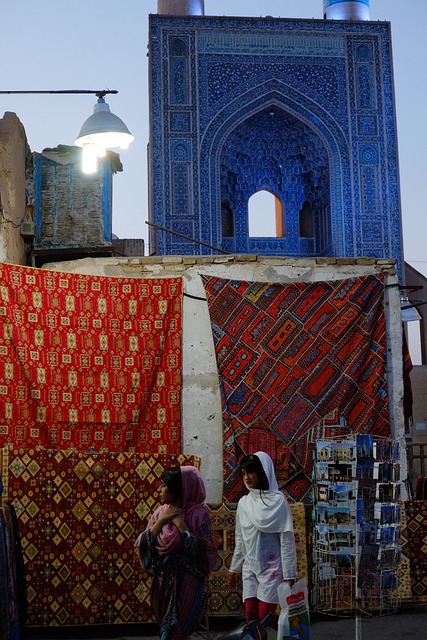
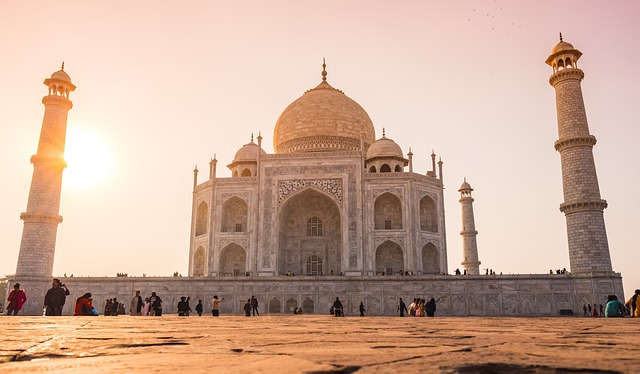
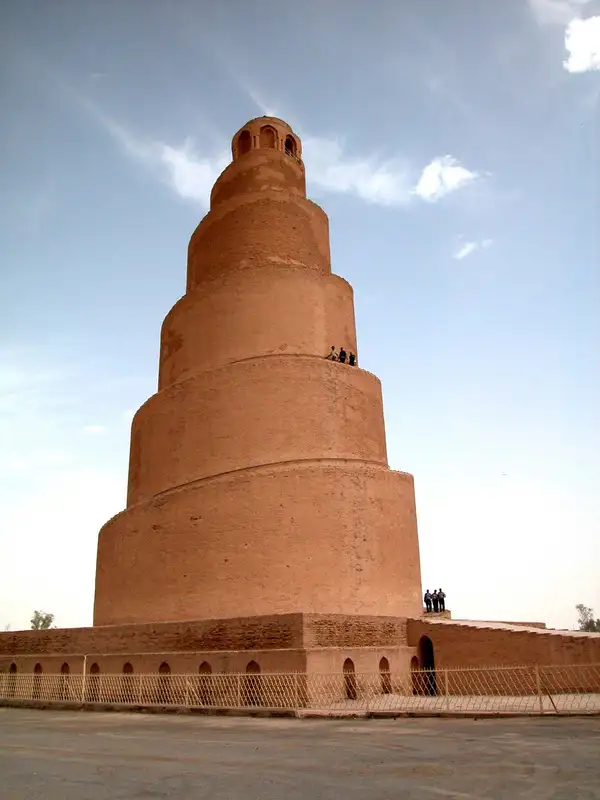


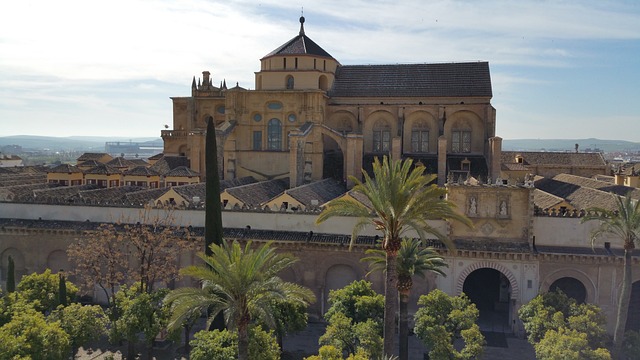
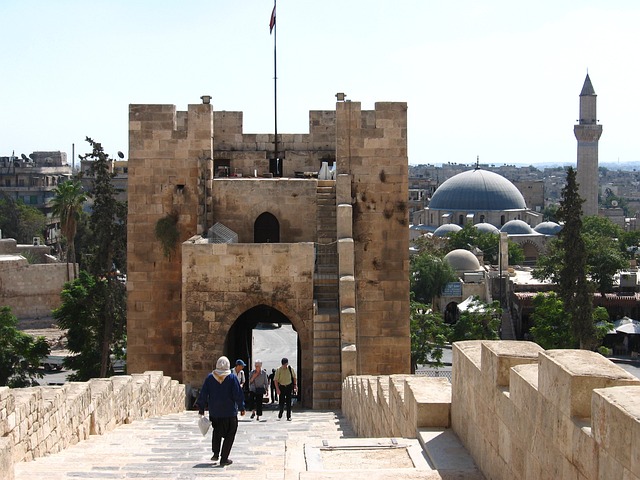
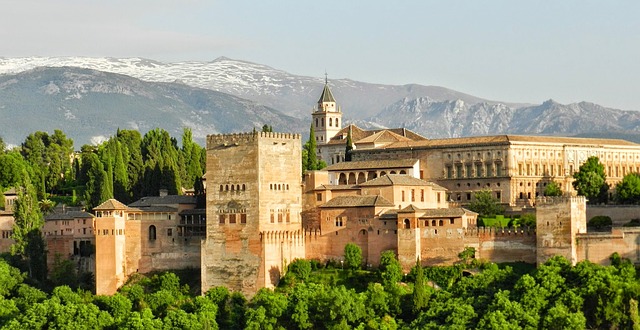
Science & Technology.
A lot more can be found here. It’s worth a quick glance through. Some are surprising.
Part Four: The End of The Golden Age of Islam
>The End
In 1206, Genghis Khan established the Mongol Empire which, during the 13th century, conquered most of the Eurasian land mass, including China in the east and much of the old Islamic caliphate (as well as Kievan Rus’) in the west. The destruction of Baghdad in 1258 has been seen by some as the end of the Islamic Golden Age.
However, there are a few alternative timelines. Some scholars extend the end date of the golden age to around 1350, while others place the end of the Islamic Golden Age as late as the end of 15th to 16th centuries, including the rise of the Islamic gunpowder empire.
Details
Part Five – The Islamic World Today
>Islam Today
More than 24.1% of the world’s population is Muslim. Current estimates conclude that the number of Muslims in the world is around 1.8 billion. Muslims are the majority in 49 countries, they speak hundreds of languages, and come from diverse ethnic backgrounds.
South Asian countries such as Indonesia, Pakistan, India, and Bangladesh have the largest populations in the world, but other countries on other continents also have very large Muslim populations. These include: Nigeria, Turkey, Somalia, China, Italy, UK, Canada, Bosnia & Herzegovina, Japan, and Brazil, to name just a very, very few. More here.
Islamophobia is an extreme fear of and hostility toward Islam and Muslims which often leads to hate speech, hate crimes, and discrimination. It existed way before the September 11th attacks on the Twin Towers.
‘Present-day Islamophobia has its roots in Medieval anti-Islamic and anti-Muslim sentiment propagated by the Christian Church prior to, and during, the Crusades (1096–1291)’. Read more about this here.
‘It is important to remember that Islam is intersectional and multicultural; a white Muslim would not have the same experience as an Asian Muslim or a Black Muslim. Muslims are not homogenous, with the diversity of nationalities, ethnicities, languages and traditions shaping an individual’s experience of religion.’
(from: https://www.onewomanproject.org/religion/2023/8/6/race-ethnicity-and-culture-within-the-study-of-islam#:~:text=Islam%20is%20intersectional%20and%20multicultural,an%20individual’s%20experience%20of%20religion.)
Part Six – Photo Collage of The Age of Islam.
>Photo Collage
Create a photo collage about The Golden Age of Islam. Some of the images might be cryptic to someone who doesn’t know very much about the topic. Your photo collage poster should provoke questions, curiosity, and understanding. If you want you can concentrate on one small area of The Golden Age of Islam such as their architecture, a particular person, or a science such as astronomy.
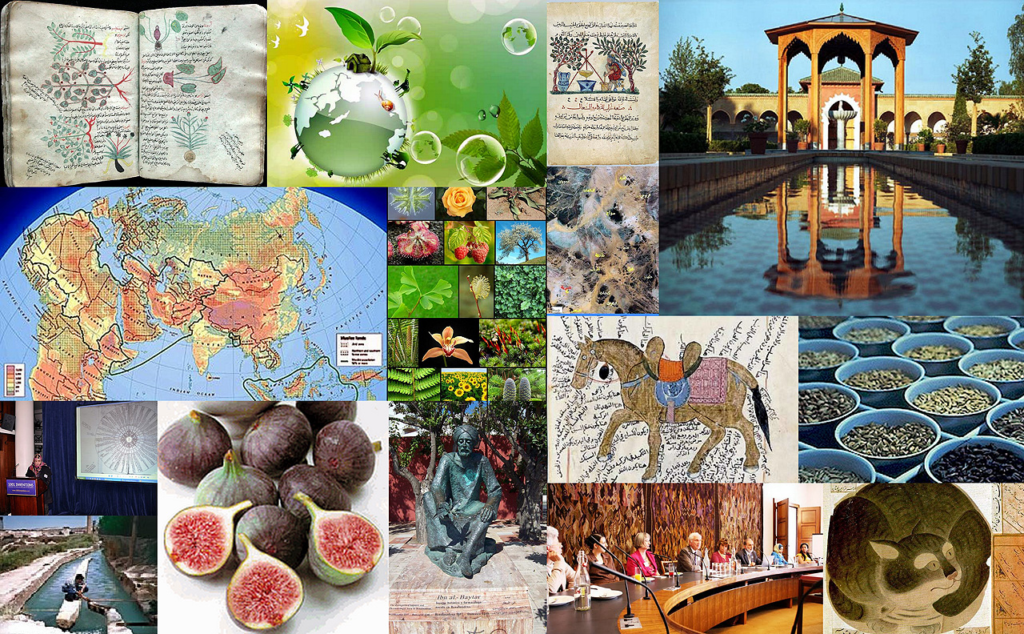
How Golden are You?
What do you know about the Golden Age of Islam?

